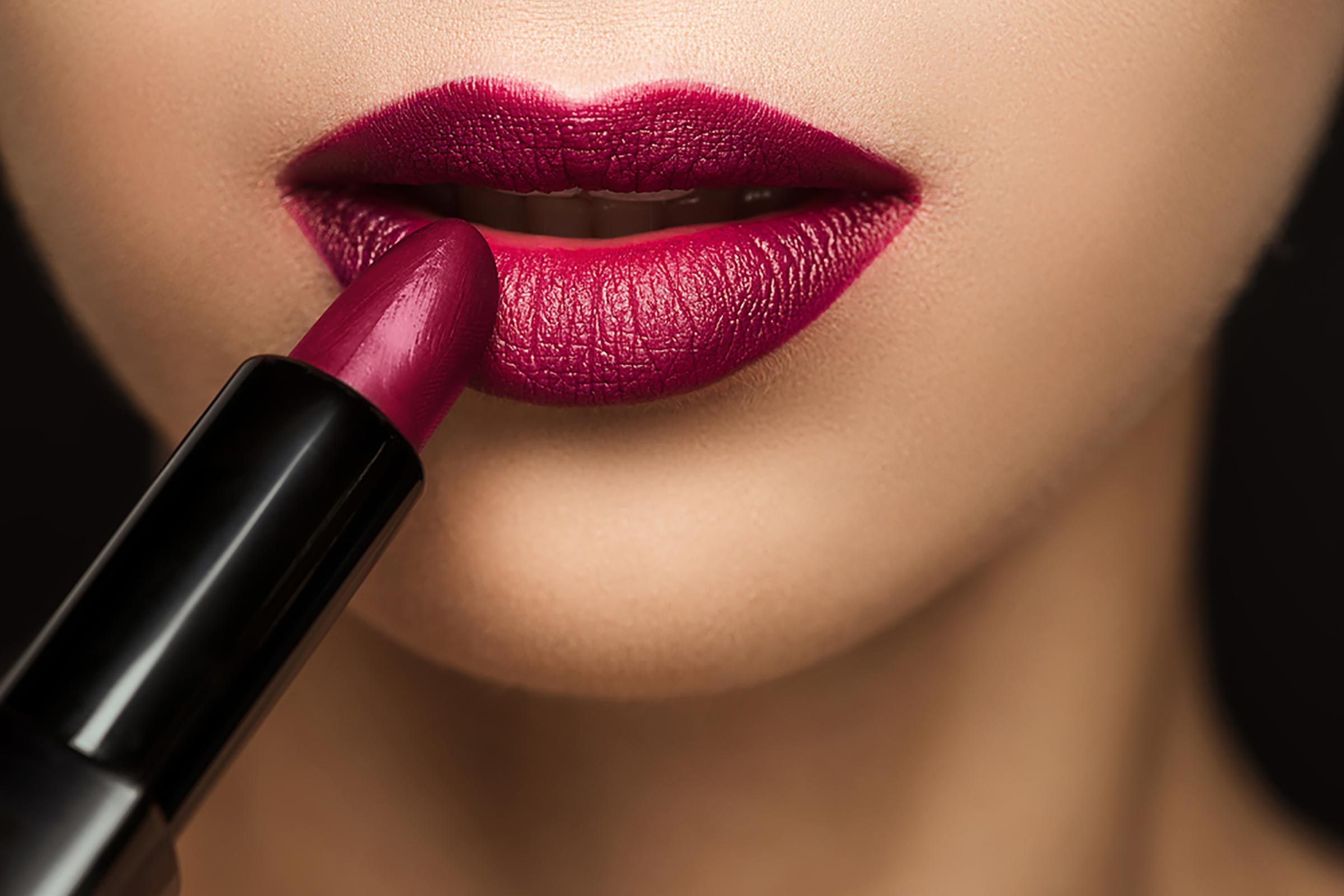Typically most lipsticks are made from three basic ingredients. They are wax, pigment and oil. Pigment is basically the color. Wax provides shape and spreadability. Oils such as petroleum, lanolin, jojoba, cocoa butter and castor add moisture. The oils can also change the intensity of your lipstick. More the oil, the more sheer is the application. Lesser the oil present in your lipstick, the richer the pigment.
Toxic Ingredients Present In Lipstick
- Methylparaben: This acts as a preservative and hence is added as an ingredient in the making of lipsticks. Methylparaben is present in several beauty products as a preservative. However, it is closely linked to cancer. It could also disrupt your endocrine system.
Methylparaben can be easily absorbed by our skin. However, the body does not store this chemical for long. It gets eliminated quickly. Despite being a preservative this chemical is restricted by several countries across Europe and the U.S. due it carcinogenic properties.
An alarming news is that most often methylparaben is not mentioned as one of the ingredients on your lipstick packaging. This makes it almost impossible for consumers to be aware of its presence. This preservative has been classified as “moderately risky” by Cosmetic Database.
- Propylparaben: It is frequently used as a cosmetic ingredient that can irritate your skin and eyes or even cause allergic reactions. Studies have raised concerns that it is cancer causing and has the ability to disrupt the endocrine system. It is classified as “moderately risky” by the Cosmetic Database.
- Polyparaben: Polyparaben too is added as a preservative to lipsticks. It has antifungal and antibacterial properties. It prevents the oil present in the lipstick from going rancid. Therefore, it protects the product as well as the consumer.
There have been instances and evidence that polyparaben is an endocrine disruptor and an allergen for some people. It does not seem to accumulate in the body and has therefore been passed as safe for use in cosmetic products. It has been classified as “highly risky” by the Cosmetic Database.
Some brands claim to use non-toxic but yet effective ingredients that are safe for you. They claim to use preservatives like honey, clay and salt. While some brands claim to use only half of the acceptable amount of polyparaben.
- Retinyl Palmitate: It is a synthetic form of Vitamin A that is known to be hazardous to pregnant women. This “moderately toxic” chemical has very limited evidence to cause cancer or other health problems.
When exposed to ultraviolet light, retinol compounds break down and produce toxic radicals that can damage DNA and cause genetic mutations, which are a precursor to cancer. The advantages of using it are that, even though it is a synthetic form, the body can still use it as vitamin A.
Once it has been applied to the lips it is absorbed through the skin. It is one of the most important vitamins for the skin in terms of skin appearance because its tiny molecules can penetrate right to the deeper layers of the skin, helping to repair collagen and elastin.
This is why products containing it are often marketed as “anti-aging”. It is an exfoliator that has the effect of removing the upper dry skin layers to reveal the new cells underneath. This is how it keeps lips soft and smooth.
- Lead: Needless to mention that lead is popularly known as a neurotoxin chemical. It accumulates in our bodies over time. It is commonly present in lipstick. Most of the lipsticks tested contain lead. It isn’t an actual ingredient, but it is a contaminant that makes its way through the materials used to manufacture the products, or through the pigments that are used in them.
Lead is extremely dangerous for pregnant women and young children because it can cause neurodevelopmental problems. Lead has also been linked to infertility and miscarriages. No level of lead is safe for you, it is not something you want to consume.
- Pigments: They are also referred to as dyes. Dyes are used to give lipstick their colour, and there are certainly many different ones on the market to choose from. Which colours are in fashion changes all the time, but the reds and pinks are classics with timeless appeal.
Lipsticks are made from synthetic dyes that typically come from aluminium or petroleum products. These pigments get stored in our bodies as fatty tissues. Coal tar which is one of petroleum products is known to be a carcinogen.
How To Get Rid Of Lipstick Stains?
Since lipstick stains are oily, you will need detergents that fight grease. Or you should use a special stain remover to get rid of the lip stain. One of the best agents you could use to get rid of lipstick stains is alcohol. Rub some room temperature alcohol on the stain and use a piece of cloth to dab on the stain and gently remove it.
There are other alternatives to alcohol. You can use a dishwasher detergent. Acetone, spirit and nail polish remover do a good job too. Apply one of these on the lipstick stain. Use an old toothbrush to scrub the stain. Once you are done, rinse that area with isopropyl alcohol and blot dry.
Incase you use liquid glycerin, let it stand for about half an hour and then wash it off using a detergent. Oxygen bleach, vinegar and diluted ammonia could be used as well. Do not touch them with bare hands, use an eyedropper to treat the lipstick stain.
Last but not the least petroleum jelly. Yes, this too could be used as a stain remover. Just rub some petroleum jelly over the stain and give your dress a good wash. Woosh! The stain is gone.

